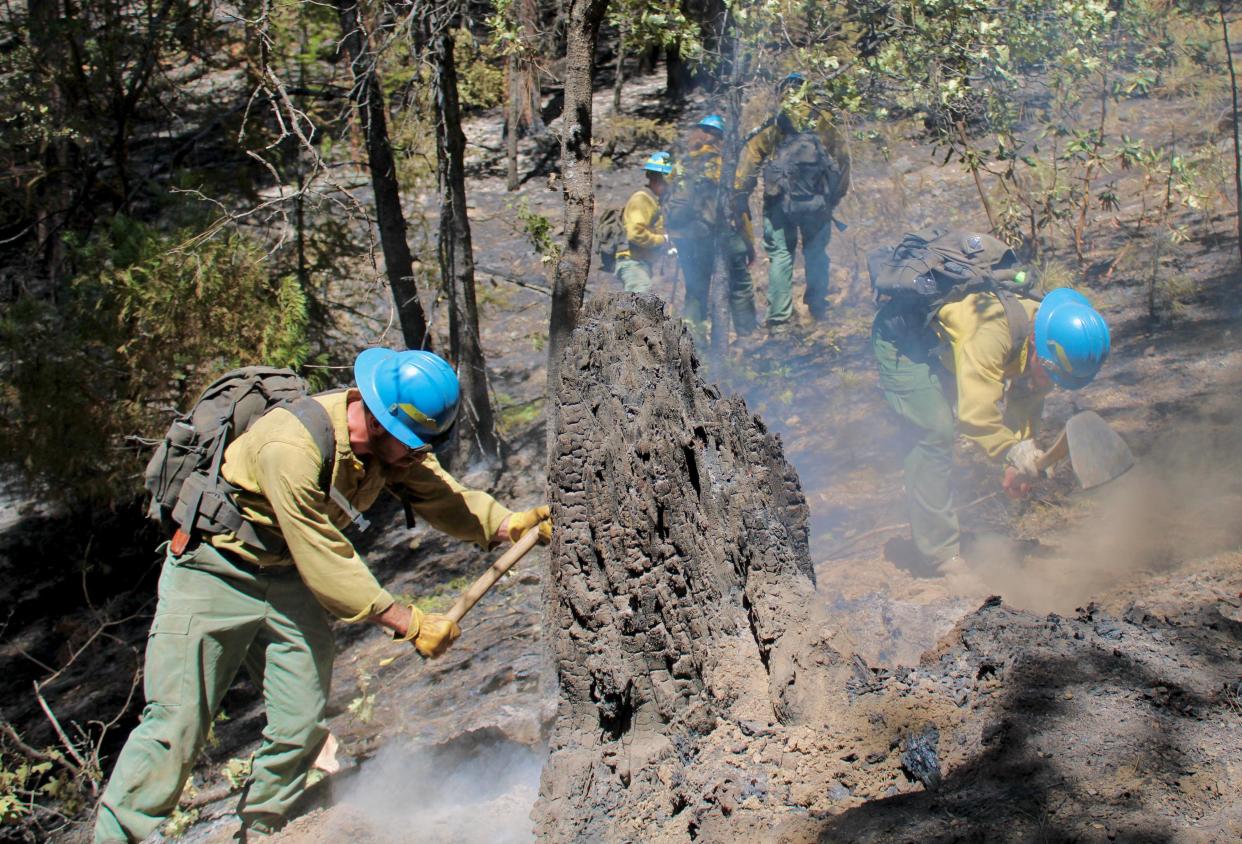Smoke lingers from Six Rivers Complex, Northern California wildfires burning near Redding

Smoke from the complex of fires burning in Trinity and Humboldt counties continues to drift into the greater Redding area.
The Six Rivers Complex, burning near Willow Creek and Salyer along Highway 299, grew overnight to 27,019 acres with containment at 80%, the U.S. Forest Service said Monday.
“Yesterday, the northeast portion of Campbell breached the containment lines. The SRF Complex is expected to have moderate to active fire behavior today,” the U.S. Forest Services said Monday morning.
Smoke is expected to linger in the valley throughout Monday.
Previous wildfire coverage:
The fires started Aug. 5 when a lightning storm moved through the area, igniting 12 separate fires.
Officials said a change to hot and dry weather conditions with gusty winds allowed the Campbell Fire in the complex to move beyond Cedar Creek toward Lone Pine Ridge.
“Today, the greatest potential for increased fire behavior is anticipated with potential for spotting,” the Forest Service said.
Meanwhile, the McKinney Fire, about 15 miles west of Yreka, did not grow and remains at 60,138 cares and 95% containment.
And the Yeti Fire, about 15 miles west of the McKinney Fire, is still at 7,886 acres and 90% contained as of Monday.
While the Yeti Fire was started by lightning, officials have not said what caused the McKinney Fire. The blaze broke out July 29 and went on to destroy 185 structures and kill four people.
A Forest Service Burned Area Emergency Response team has arrived in the Klamath National Forest to start post-assessment of the McKinney and Yeti fires.
The California Department of Fish and Wildlife will assess the impacts from the fires on species in the Klamath River. The Karuk Tribe has said the McKinney Fire caused the deaths of tens of thousands of fish in the Klamath River.
Though it’s unclear what caused the deaths, biologists with the Karuk believe a flash flood triggered by heavy rains over the burn area caused a massive debris flow that entered the river, Craig Tucker, a spokesman for the Karuk Tribe, told The Associated Press.
In addition to Fish and Wildlife, the Forest Service BAER team will work with the National Resources Conservation Services, the National Weather Service, U.S. Geological Survey and other state and federal agencies.
The Forest Service said the damage assessment should take about two weeks.
David Benda covers business, development and anything else that comes up for the USA TODAY Network in Redding. He also writes the weekly "Buzz on the Street" column. He’s part of a team of dedicated reporters that investigate wrongdoing, cover breaking news and tell other stories about your community. Reach him on Twitter @DavidBenda_RS or by phone at 1-530-338-8323. To support and sustain this work, please subscribe today.
This article originally appeared on Redding Record Searchlight: Smoke from Northern California wildfires remains in Redding
